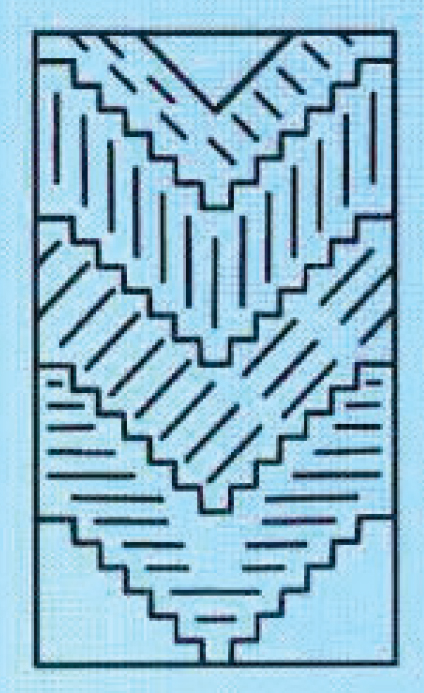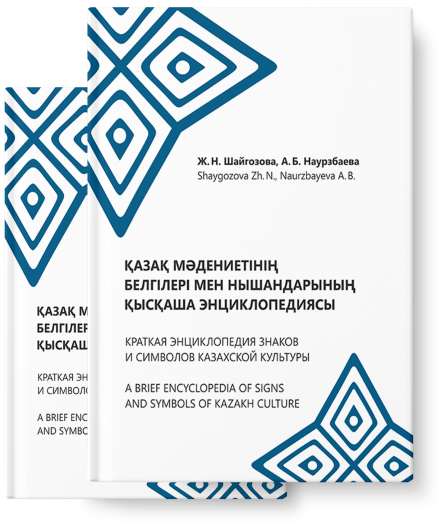
A short encyclopedia of
Signs and symbols of
Kazakh culture


The theme of “bird” occupies an important place in the ornamental art of the Kazakhs: “qūsmūryn”, “qūsqanat”, “qūsmoiyn”, etc. For many peoples of the world the bird is a celestial being, a representative of the upper world. In Turkic mythopoetics, the bird symbolises freedom and happiness and embodies the forces of good. There is a whole pantheon of favourite figures: water birds (swan, duck, etc.), wild birds (golden eagle, eagle, etc.), songbirds (lark, nightingale, etc.). In a special line stands the mythical bird “Samruk” – the creator, the bird of the new creation of the world, the bird of the world tree, the oldest cosmogonic image of the bird demiurge, a popular image of ancient Iranian and ancient Turkic mythopoetics.
Basically, birds are associated with the feminine, which embodies the cosmic spirit and often functions as a demiurge. There is a connection with representations of the soul in the form of a bird, characteristic of the cultures of Egypt, the two rivers, Greece, China and Siberia, South America, and so on. Kazakh folklore is also rich in evidence of the bird spirit (usually attributed to acyns and singers). The idea of birds as ancestors, totems of the tribe and clan is widespread. The role of birds in rituals and ceremonies is significant.


The pattern itself and its derivatives are considered powerful amulets in Kazakh culture. In traditional culture, the ring called “qūsmūryn” was worn only by virgins, and owl feathers (üki) were sewn on the headdresses of girls, children, and salsers and served as amulets attached to a dombra, cradle, etc. This emphasises their high status.
The ornament “qūstañdai” was used exclusively to decorate the clothes of orators (sheshen, bi) and akyns, symbolising vocal power.
In Turkic culture, geese and swans were often considered symbols of loyalty, devotion and love. The ornament qaz moiyn is a horizontal S-shaped figure that was often used to decorate the bride’s hope chest. Swans, like all water birds in Turkic mythology, belonged simultaneously to two worlds: The Upper and the Lower. In many myths, the ancient Turkic goddess Umay appears as a swan girl. The swan may have been a totem of the shaman-baqsy and the sal-seri.

